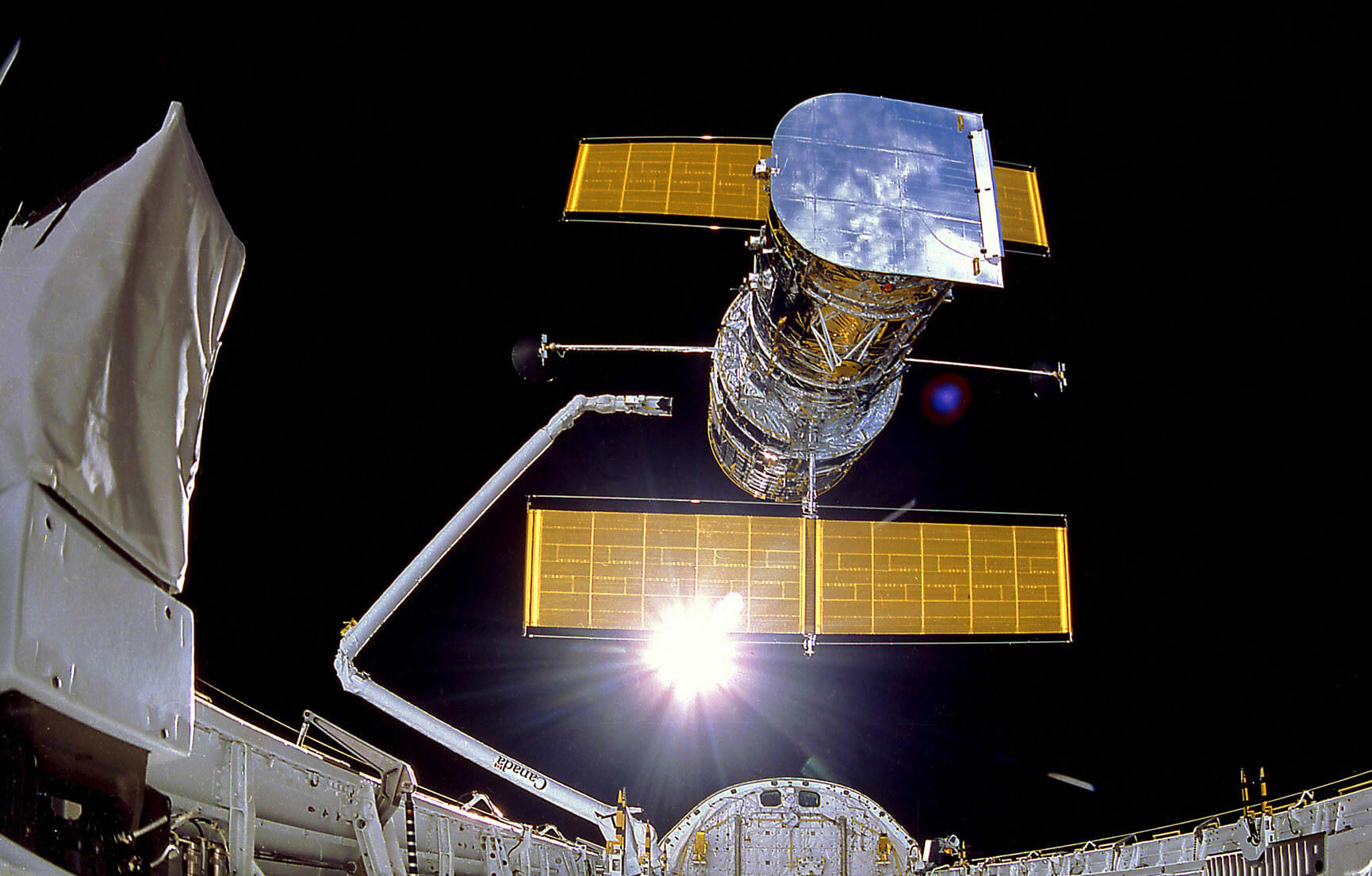For over thirty years, the Hubble Space Telescope has been in continuous operation in Low Earth Orbit (LEO) and revealing never-before-seen aspects of the Universe. In addition to capturing breathtaking images of our Solar System and discovering extrasolar planets, Hubble also probed the deepest reaches of time and space, causing astrophysicists to revise many of their previously-held theories about the cosmos.
Unfortunately, Hubble may finally be reaching the end of its lifespan. In recent weeks, NASA identified a problem with the telescope’s payload computer which suddenly stopped working. This caused Hubble and all of its scientific instruments to go into safe mode and shut down. After many days of tests and checks, technicians at the NASA Goddard Space Flight Center have yet to identify the root of the problem and get Hubble back online.
The payload computer is a NASA Standard Spacecraft Computer-1 (NSSC-1) system, which was built during the 1980s. As part of the Science Instrument Command and Data Handling (SI C&DH) module, the purpose of this computer is to control and coordinate the scientific instruments aboard the spacecraft. The last time the SI C&DH experienced a failure was back in 2009, which delayed the final servicing mission until a replacement could be prepared for flight.

The replacement contained original hardware from the 1980s, including four independent 64K memory modules of Complementary Metal-Oxide Semiconductor (CMOS) memory. By May of 2009, this replacement computer was installed as part of the fifth and final servicing mission (STS-125), where astronauts flew aboard the Space Shuttle Atlantis rendezvoused with Hubble in orbit.
The current issue began when the computer halted on Sunday, June 13th when the main computer stopped receiving the “keep-alive” signal from the payload computer – which lets the main computer know that everything is in working order. As a result, the main computer automatically placed all of Hubble‘s scientific instruments into a safe mode configuration. A day later, the Hubble operations team restarted the payload computer, but it halted again.
After analyzing the available data, the team began investigating whether a degrading memory module was the cause. Similarly, they began attempting to switch to one of the memory module’s multiple backups, but the initiation process failed to complete. On the evening of Thursday, June 17th, another attempt was made to bring both modules back online in the hopes of obtaining more diagnostic information.
While those attempts failed, the operations team was able to surmise that a different piece of hardware was responsible and the memory errors were merely a symptom. Another possibility is the Standard Interface (STINT) hardware, which bridges communications between the computer’s Central Processing Module (CPM) and other components. At this juncture, the operations team investigating whether either could be at the root of the problem.

To this end, the team is designing tests that will be run during the next few days, the purpose of which is to further isolate the problem and identify a potential solution. These tests are also intended to determine what hardware is still working properly aboard Hubble for future reference. If the issue can’t be fixed, the operations team will consider switching to the STINT and CPM hardware onboard the backup payload computer.
The backup computer has not been activated since it was installed back in 2009, but the operations team has conducted ground tests and a review of all operations procedures to verify that they will be able to do so if the need arises. If it is decided that the backup payload computer’s CPM and STINT hardware needs to be turned on, the team will need several days to assess the computer’s performance and restore normal science operations.
Assuming that normal operations cannot be restored, we could potentially be looking at the end of Hubble‘s long history of service. The only alternative would be to mount a sixth servicing mission to swap out its hardware for new components, which would be very costly and offers no assurances of success. If this should prove to be the case, then Hubble will remain in space until its orbit decays sometime in the 2030s or 2040s.
During its thirty-plus years in operation, the venerable Hubble has revolutionized the fields of astronomy, cosmology, and astrophysics. Thanks to its Deep Field and Ultra Deep Field, humanity has been able to peer farther into space (and back in time) than ever before. These observations led to the realization that the cosmos are expanding at an accelerated rate over time, prompting scientists to theorize the existence of Dark Energy.
It’s a foregone conclusion that the astronomical community would like to see normal operations restored so the mission can keep going for a few more years. But if any mission deserves a comfortable retirement at his juncture, it is Hubble, the space telescope that validated space-based astronomy and paved the way for missions like the James Webb and the Nancy Grace Roman Space Telescope.
Further Reading: NASA


If “a sixth servicing mission to swap out its hardware for new components,” is all that us needed for a few more years of observing life, then isn’t that still cheaper than build another space telescope from scratch with Hubble’s capabilities?